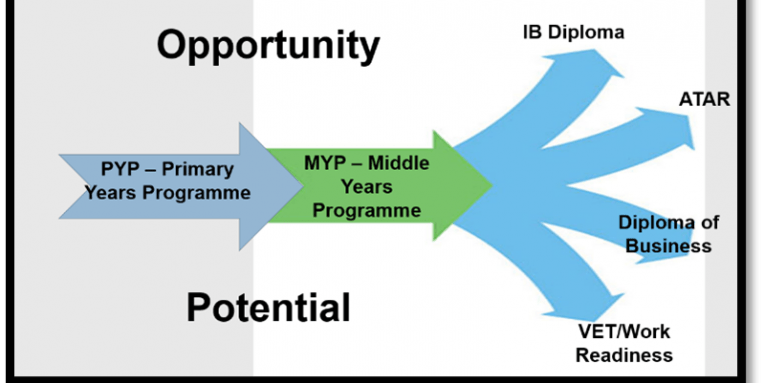Introduction
Mathkeymatics is an innovative teaching approach that uses technology and games to engage students from kindergarten through high school in critical math skills and concepts. By creating a fun and interactive environment, Mathkeymatics encourages students to develop a love of math and helps them build the skills needed to succeed in the future. Through a variety of strategies and activities, Mathkeymatics offers teachers and students an engaging way to explore mathematics. This article will explore the benefits of using Mathkeymatics to teach mathematics and how to apply it in the classroom.
Mathkeymatics is a computer-aided learning program designed to help students learn to investigate mathematical concepts and techniques. It was developed to teach independent problem solving and provide a hands-on opportunity for students to explore mathematics in an interactive environment. Mathkeymatics focuses on providing virtual activities that encourage collaboration, open-ended exploration, critical thinking, and problem solving. The program boasts a variety of virtual tools that students can use to investigate and practice mathematical topics, such as the use of virtual manipulatives to represent mathematical models; interactive drag-and-drop tools to visually represent problems and solutions; and tools and tutorials to help build mathematical skills. It is used in both the classroom and in remote learning environments, allowing students to customize their learning experience and access educational resources when and where they need them.
History of Mathkeymatics
Ancient Origins
Mathkeymatics has a long and storied history, dating back to ancient times. The earliest recorded mathematical treatise comes from ancient Sumer, where a people known as the Sumerians developed a numeric system with the base 60, which is still in use today when measuring time. In the ancient 2nd millennium BC, the Babylonians developed a sophisticated number system and mathematical concepts such as algebra and arithmetic.
Greeks and Romans
In the fifth century BC, the great Greek mathematician, Aristotle, began exploring the concept of mathematics. He was responsible for introducing the idea of axioms, logical statements used to prove mathematical theorems, which would become the basis for modern geometry. Later, Archimedes, another great mathematician, developed theories for calculating the area and volume of curved shapes and experimented with mechanics, proving the value of mathematics to the physical world. The Romans also contributed significantly to mathematics. They were responsible for introducing the concept of zero as a placeholder in their mathematical calculations, and they developed practical maths like mensuration and surveying for efficient land management.
Medieval Developments
In the Middle Ages, mathematics was used primarily for practical applications such as merchant calculations, but some mathematicians were still exploring more abstract concepts such as number theory. The most influential of these thinkers was Gerbert of Aurillac, who improved the abacus and developed the algorithm, which is still used today in computer programming.
Renaissance & Beyond
In the Renaissance, a revolution in math began, with the invention of calculus by Italian scientist, Galileo Galilei. A period of intense mathematical development followed, with famous thinkers such as Thomas Hobbes and Rene Descartes exploring new concepts. During this time, modern maths such as linear algebra, trigonometry, and the analysis of algorithms were developed. In the 19th and 20th centuries, mathematics underwent a tremendous expansion, with the invention of many new fields including abstract algebra, topology, and probability theory. With the emergence of computers, mathematics experienced another transformation, with the introduction of algorithms and software to speed up and automate mathematical calculations. Today, mathematics is increasingly used in the sciences, technology, and even art, with mathematicians continuing to make major contributions to our understanding of the world. Mathematics is a science that is constantly evolving and will continue to enrich our lives for years to come.
Applications of Mathkeymatics
Mathematics
Mathematics is an integral part of a wide range of applications in everyday life. From banking to computer programming, mathematics is used in almost every industry. From the development of algorithms in computer coding to the analysis of financial markets, mathematics is heavily employed in the business world. For example, a company can use statistics to help identify trends in consumer spending. Additionally, mathematics is used to calculate the optimum position of a financial portfolio in terms of risk versus reward. Besides the corporate world, mathematics is also used in healthcare, education, and even government projects.
Physics
Physics makes use of mathematics extensively. For instance, complex theories such as quantum mechanics and general relativity from physics require the use of mathematics to understand them. Further, fields such as astrophysics or nuclear physics also require knowledge of complex mathematics, especially in relation to the different equations and formulas. Additionally, mathematics is often used to model physical phenomena, such as fluids, particles, and other dynamic systems. Likewise, mathematics is widely used to solve physical problems in fluid dynamics, statistical mechanics, and other areas related to physics.
Engineering
Mathematics plays a vital role in the engineering field, by being used to solve a wide range of problems. For instance, calculus is used to find solutions to complex engineering problems. This includes the finding of the optimum values for structures, machinery, and other systems. Likewise, mathematics is used to analyze and calculate the loads, stresses, and pressures of different structures. In addition, mathematics is extensively used in the fields of control systems and robotics. Moreover, mathematics is often used to develop mathematical models of phenomena, which can then be used to analyze the behavior of different engineering systems.
Application of Mathkeymatics in Finance
Time Value of Money
The time value of money is a concept in finance that states that money today is worth more than the same amount in the future due to its potential earning capacity.This concept is based on the mathematical formula of present and future worth, which uses interest rates and other inputs to calculate the present value of future flows of money.
Financial Modeling
Financial modeling is a process of creating a mathematical representation of a financial situation based on historical data. This process involves making assumptions, sources of data, building the models and validation of the model based on the assumptions. Financial modeling is used to make decisions, forecast future scenarios and to assess various financial instruments such as stocks, bonds and derivatives.
Risk Management
Risk management is essential in the financial world. It is the process of measuring and managing the risks an organization or individual faces. It involves estimating the level of risk, mitigating the risk and monitoring it. Mathematics is used to quantify and measure risk, calculate the expected rate of return on a particular project or asset portfolio and to estimate the likelihood of occurrence of certain risks.
Statistical Analysis
Statistics plays an important role in the analysis of financial data.It is used to draw conclusions from data by summarizing it and to test assumptions by conducting tests of significance.It also helps to create forecasts of future events, to identify trends and relationships in the data and to make informed financial decisions.
Benefits of mathkeymatics
Problem-solving Skills
Mathkeymatics encourages problem solving skills by breaking down complex mathematical problems into doable steps. Through this approach, students develop an understanding of the processes involved and thus work on sharpening their own problem-solving skills. Mathkeymatics also provides a variety of resources, including videos, online learning activities, worksheets and games, to help students practice and hone their problem-solving skills.
Creativity
Mathkeymatics encourages a creative approach for students to engage with mathematical concepts. For example, students can create their own virtual worlds or play interactive games to understand topics like angles or graphs. This also allows students to develop a better understanding of mathematical ideas and establish their own connections between concepts to deepen their learning.
Increased Understanding Of Complex Mathematical Concepts
Mathkeymatics offers a range of resources which can help students gain an increased understanding of complex mathematical topics. This may include customized quizzes or worksheets which can be used to build up students’ knowledge of topics. Mathkeymatics also provides video lectures which explain concepts in an easy-to-follow manner, allowing students to increase their understanding of mathematical concepts.
Controversies
Controversy Regarding Mathematics Manipulatives
Mathematics manipulatives are physical objects that are used to illustrate mathematical concepts. Despite the many advantages associated with their use, there has been some controversy surrounding their purpose in teaching. On one hand, many educators argue that the use of manipulatives can help to even the playing field by allowing hands-on learning for certain students who have difficulty comprehending mathematical concepts simply through abstract learning. Other educators say that manipulatives can help a teacher explain a concept more effectively. They can also help to engage visual and kinesthetic learners.
On the other hand, some contend that the use of manipulatives can often slow learning down. They argue that manipulatives are often confusing and distracting, especially in the case of relatively new students or students with short attention spans. They argue that they are not necessary, as many students can learn the same mathematical concepts through other methods such as lectures, discussions, and paper-and-pencil activities. Additionally, there is some research that has suggested that the use of manipulatives is not as effective as traditional methods. Despite the various opinions on the subject, it has been agreed that there is no one-size-fits-all approach when it comes to using manipulatives to teach mathematics. Different students respond to different methods, and the effectiveness of manipulatives often depends on the teacher’s skills, the student’s learning style, and the overall lesson plan. It is each educator’s responsibility to determine if and when to incorporate manipulatives into their lesson plans.
Conclusion
Conclusion MathKeymatics is an online platform that allows students to practice various mathematical operations in a convenient and intuitive way. The easy-to-understand explanation and step-by-step instructions make it easy for users to quickly acquire the knowledge they need and apply it to solve problems and tasks. It can be used in both formal schooling and informal learning environments, offering a great way for students of all ages and abilities to gain confidence in their mathematics abilities. With an excellent user-friendly interface, MathKeymatics can revolutionize the way we learn and understand maths, facilitate collaboration between students, and reduce the stress that often comes with mathematics.
FAQs
Q1 : What is MathKeymatics?
A1 : MathKeymatics is an interactive educational platform that offers live classes and tutorials to help students learn math. It offers an engaging and visual way to understand math topics that may be difficult for some students to learn in traditional classroom settings.
Q2 : Is MathKeymatics suitable for different levels of math?
A2 : Yes, MathKeymatics is designed to provide lessons suitable for all levels of math, from basic arithmetic to advanced calculus. The lessons are divided into separate courses and skill levels so all students can find the right classes to fit their needs.
Q3 : How can MathKeymatics help me improve my math skills?
A3 : MathKeymatics offers an accessible way for everyone to learn and master math. It features interactive and engaging lessons, quizzes, and real-time feedback that can help individuals identify their strong and weak points and improve their math skills.
Q4 : How can I access MathKeymatics?
A4 : MathKeymatics is available on all major platforms, including computer, tablet, and mobile devices. It can be accessed through any web browser or by downloading the MathKeymatics app from the app store.
Q5 : Is there a fee to use MathKeymatics?
A5 : MathKeymatics offers different subscription plans and pricing for individuals and institutions. Depending on the plan, there may be a fee for using the MathKeymatics platform. There is also a free trial period for those who want to try out MathKeymatics before deciding if they want to subscribe.










